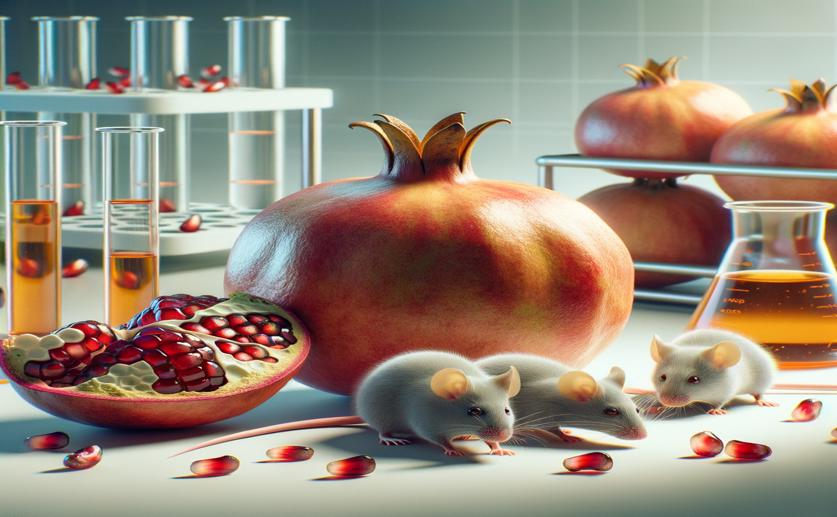
Natural Pomegranate Peel Extract's Impact on Cystic Disease in Mice
Greg Howard
14th May, 2024

Image Source: Natural Science News, 2024
Key Findings
- Recent research from Menoufia University found that combining pomegranate peel extract (PGE) with albendazole (ABZ) significantly reduced the size and weight of hydatid cysts in infected mice
- The combination of PGE and ABZ led to marked histopathological improvements and significant ultrastructural changes in the cysts, indicating enhanced therapeutic efficacy
- PGE also modulated the immune response by reducing interferon-gamma (IFN-γ) levels, potentially mitigating the inflammatory side effects associated with ABZ treatment
References
Main Study
1) An in vivo appraisal of Punica granatum peel extract's ultrastructural effect on cystic echinococcosis in mice.
Published 13th May, 2024
https://doi.org/10.1017/S0022149X24000300
Related Studies
2) Zataria multiflora would attenuate the hepatotoxicity of long-term albendazole treatment in mice with cystic echinococcosis.
3) Hydroalcoholic extract based-ointment from Punica granatum L. peels with enhanced in vivo healing potential on dermal wounds.
4) Activities of fenbendazole in comparison with albendazole against Echinococcus multilocularis metacestodes in vitro and in a murine infection model.



 14th May, 2024 | Jenn Hoskins
14th May, 2024 | Jenn Hoskins